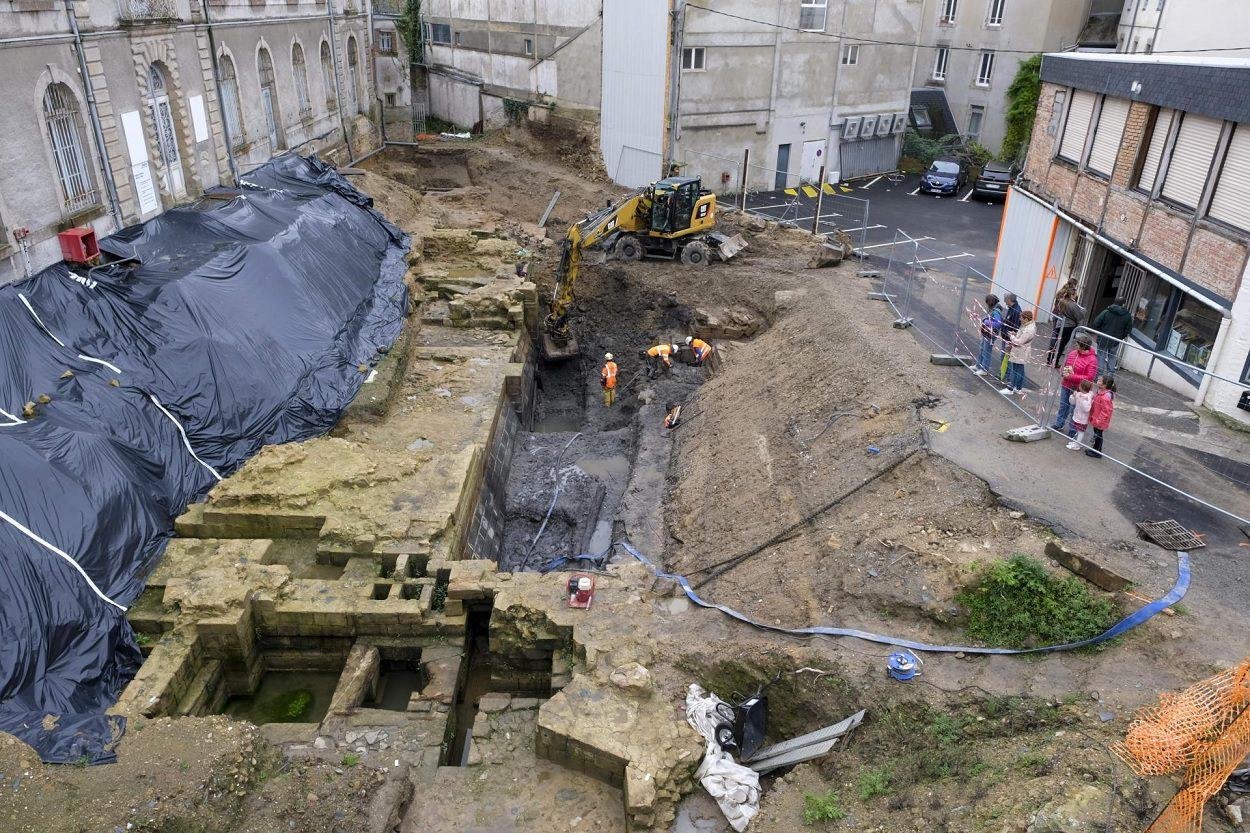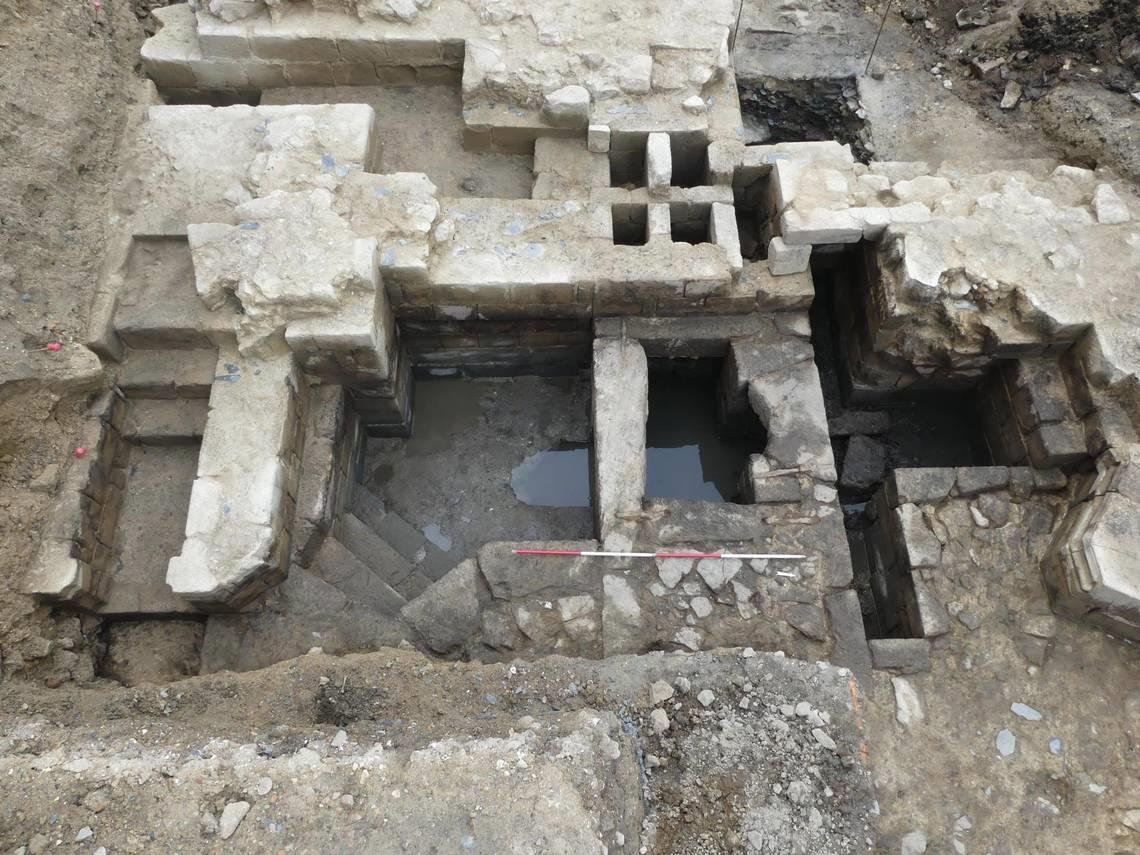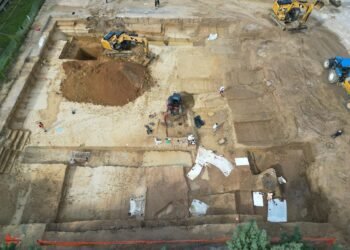Excavations conducted at the Château Lagorce, formerly an 18th-century private mansion in Vannes, Brittany, have unveiled the long-buried remnants of the town’s medieval castle.

The town of Vannes, situated in the Morbihan department of north-western France, served as a vital center in medieval times, known as Bro-Wened or Bro-Ereg.
Led by archaeologists from the National Institute for Preventive Archaeological Research (Inrap), the excavation project aimed to prepare for the development of a fine arts museum on the site. What archaeologists uncovered exceeded expectations, revealing the extensive ruins of the medieval castle, believed to be approximately 600 years old.
Constructed around 1380 by Jean IV, Duke of Brittany and Count of Montfort, the castle, known as the Château de l’Hermine, was a symbol of Jean IV’s authority over his duchy and the town of Vannes. The excavation revealed two well-preserved stories of the fortress-like castle, buried beneath layers of soil and embankment. The ground floor, measuring approximately 140 feet in length and 55 feet in width, boasted sturdy walls nearly 20 feet thick.

Remains of staircases, including one described as “remarkably preserved,” offer clues to the castle’s architectural sophistication. Latrines and drainage pipes, indicative of medieval sanitary systems, were also uncovered, suggesting the castle had three or four floors.
One notable discovery was a water-powered mill integrated into the castle’s residential quarters. The mill utilized water from the nearby Marle River, channeled through a canal beneath the castle, and discharged into the surrounding moat. Additionally, remnants of a bridge connecting the castle to the town were found, highlighting the strategic importance of access for the castle’s inhabitants.

Artifacts recovered from the excavation paint a vivid picture of medieval life within the castle walls. Coins, jewelry, cooking utensils, and even fragments of clothing provide glimpses into the daily lives of the castle’s occupants.
The findings underscore the importance of the castle in the region’s history and its eventual decline into abandonment. Despite its eventual neglect, the castle’s legacy endured, forming the foundation for the 18th-century mansion that stands on the site today.





























